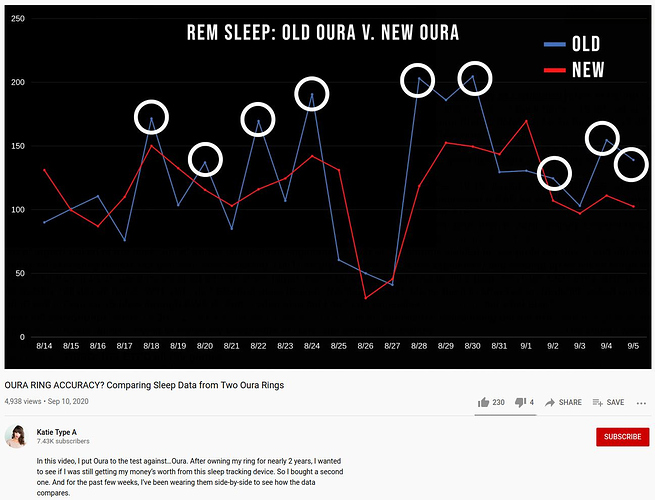Here’s a blogger reviewing how she compared two identical Oura rings worn on the same finger of opposite hands over 3 weeks:
Measurements that matched: HRV, heart rate, respiratory rate, total sleep time, light sleep
Large discrepancies: REM sleep, sleep latency, temperature
Significant discrepancies: deep sleep, calories burned (~200/day)

